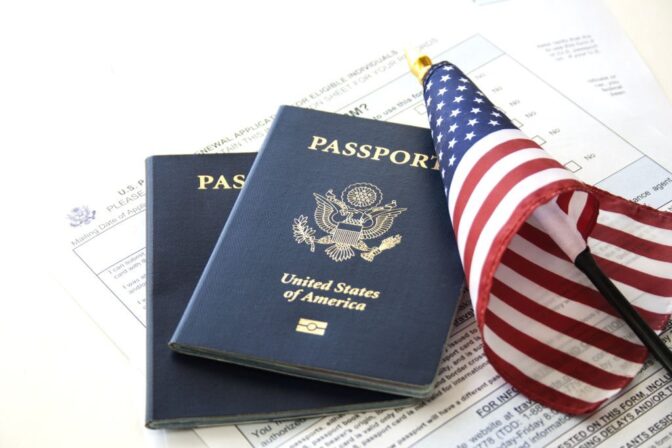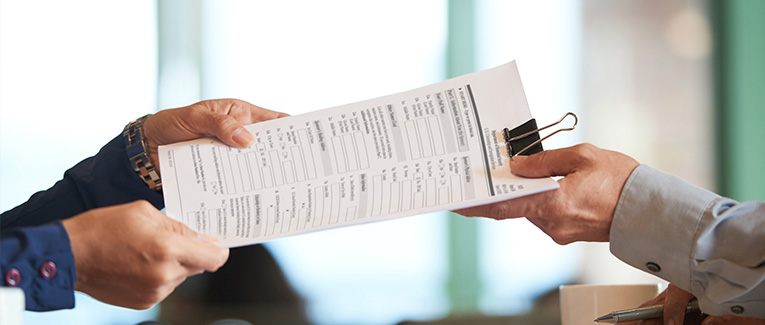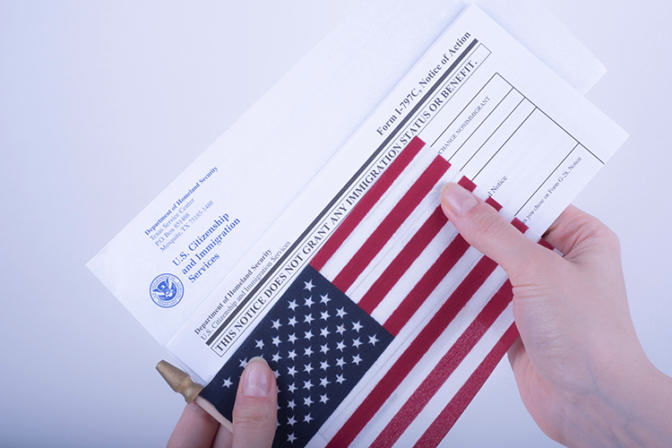US visa sponsorship is a system that allows individuals or organizations in the United States to support and facilitate the entry of foreign nationals into the country.
The concept of sponsorship has its roots in the early 20th century when the US government first introduced laws regulating immigration. The Immigration Act of 1917, also known as the Asiatic Barred Zone Act, introduced the concept of sponsorship as a way to ensure that immigrants had a support system in place before entering the country.
Over the years, the sponsorship system has evolved to accommodate changing immigration policies and laws.
Today, the primary purpose of US visa sponsorship is to ensure that foreign nationals entering the country have a legitimate reason for doing so, such as family ties, employment, education, or humanitarian reasons.
The sponsor takes on a significant level of responsibility, agreeing to provide financial support and ensure that the sponsored individual complies with US immigration laws and regulations.
The sponsorship process involves a formal agreement between the sponsor and the US government, where the sponsor agrees to provide support and resources to the sponsored individual.
This includes providing proof of financial resources, health insurance, and a guarantee that the sponsored individual will not become a public charge. In return, the sponsored individual is granted a visa or green card, allowing them to enter and reside in the US.
Types of US Visa Sponsorship Opportunities

There are various visa sponsorship opportunities available for immigrants. Some of these include the following:
1. The family-based sponsorship
Family-based sponsorship is one of the opportunities out there. However, various categories would enable you to be qualified for the sponsorship. They include:
a. Immediate Relative Category
The immediate relative category allows U.S. citizens to sponsor their immediate relatives for immigration to the United States.
This category includes spouses, parents, and unmarried children (under 21) of U.S. citizens.
The process typically involves filing a petition with U.S. Citizenship and Immigration Services (USCIS) and providing proof of the family relationship.
Once approved, the sponsored individual can apply for a visa or green card, enabling them to enter and reside in the U.S.
b. Family Preference Category
The family preference category allows U.S. citizens and lawful permanent residents (green card holders) to sponsor their adult children, siblings, and married children for immigration to the United States.
This category also includes spouses and children of lawful permanent residents. The process involves filing a petition with USCIS and providing proof of the family relationship.
However, the process can be more complex and time-consuming compared to the immediate relative category.
2. Employment-Based Sponsorship
The second type of visa sponsorship opportunity on our list is employment-based sponsorship. And just like the family-based sponsorship, they also have various types you can apply for.
a. H-1B Specialty Occupations
The H-1B specialty occupations category allows U.S. employers to sponsor foreign workers with specialized skills, such as IT workers, engineers, and healthcare professionals.
The employer must file a petition with USCIS and demonstrate that the foreign worker has the required qualifications and experience.
The sponsored individual can then apply for an H-1B visa, enabling them to work in the U.S. for a specific period.
b. L-1 Intracompany Transferees
The L-1 intracompany transferees category allows U.S. employers to sponsor foreign workers who are employees of international companies transferring to a U.S. branch.
The employer must file a petition with USCIS and demonstrate that the foreign worker has been employed by the company for at least one year before the transfer.
The sponsored individual can then apply for an L-1 visa, enabling them to work in the U.S. for a specific period.
c. TN NAFTA Professionals
The TN NAFTA professionals category allows Canadian and Mexican citizens to work in the U.S. under the North American Free Trade Agreement (NAFTA).
The employer must file a petition with USCIS and demonstrate that the foreign worker has the required qualifications and experience.
The sponsored individual can then apply for a TN visa, enabling them to work in the U.S. for a specific period.
d. EB-1 Priority Workers
The EB-1 priority workers category allows U.S. employers to sponsor foreign workers with extraordinary abilities, outstanding professors and researchers, and certain multinational managers and executives.
The employer must file a petition with USCIS and demonstrate that the foreign worker has achieved recognition and distinction in their field.
The sponsored individual can then apply for an EB-1 visa, enabling them to work and live permanently in the U.S.
e. EB-2 Advanced Degree Holders
The EB-2 advanced degree holders category allows U.S. employers to sponsor foreign workers with advanced degrees or exceptional ability in their field.
The employer must file a petition with USCIS and demonstrate that the foreign worker has the required qualifications and experience.
The sponsored individual can then apply for an EB-2 visa, enabling them to work and live permanently in the U.S.
f. EB-3 Skilled and Unskilled Workers
The EB-3 skilled and unskilled workers category allows U.S. employers to sponsor skilled foreign workers, professionals, or unskilled workers.
The employer must file a petition with USCIS and demonstrate that the foreign worker has the required qualifications and experience.
The sponsored individual can then apply for an EB-3 visa, enabling them to work and live permanently in the U.S.
3. Investor Visa (EB-5)
The EB-5 investor visa category allows foreign investors to create jobs and invest in U.S. businesses.
The investor must file a petition with USCIS and demonstrate that they have invested in or are in the process of investing in a U.S. business and that the investment will create jobs for U.S. workers.
The sponsored individual can then apply for an EB-5 visa, enabling them to live and work permanently in the U.S.
4. Diversity Visa (DV) Program
The diversity visa (DV) program is a lottery program for individuals from countries with low rates of immigration to the U.S. The program is designed to promote diversity and cultural exchange.
Applicants must register for the program and meet certain eligibility requirements. If selected, the sponsored individual can apply for a DV visa, enabling them to live and work permanently in the U.S.
5. Refugee and Asylum Status
Refugee and asylum status is available to individuals fleeing persecution or violence in their home countries. The individual must apply for refugee status or asylum through the U.S.
Refugee Admissions Program or the U.S. Citizenship and Immigration Services (USCIS). If approved, the individual can enter and reside in the U.S.
6. Student Visa (F-1)
The F-1 student visa category allows international students to pursue education in the United States.
To qualify, students must be accepted into a Student and Exchange Visitor Program (SEVP)-approved school, demonstrate sufficient financial resources, and meet other eligibility requirements.
Once approved, students can enter the U.S. to study and may also be eligible for optional practical training (OPT) or curricular practical training (CPT) to gain work experience.
7. Exchange Visitor Visa (J-1)
The J-1 exchange visitor visa category allows individuals to participate in cultural exchange programs, such as au pairs, interns, scholars, and researchers.
Sponsors must be designated by the U.S. Department of State and meet specific requirements.
Participants can enter the U.S. for a specific period, usually up to 18 months, and may be eligible for extensions or changes of status.
8. Temporary Worker Visas
Temporary worker visas allow foreign workers to enter the U.S. for a specific period to work in a particular occupation. Categories include:
- H-2A Agricultural Workers: For temporary or seasonal agricultural work.
- H-2B Non-Agricultural Workers: For temporary or seasonal non-agricultural work.
- H-3 Trainees: For training and development in a specific occupation.
Note: This list is not exhaustive, and specific requirements and categories may vary depending on individual circumstances.
How to Find a US Visa Sponsorship Opportunity

Finding a US visa sponsorship opportunity can be a challenging and competitive process, but several strategies and resources can increase your chances of success.
Here are some unique and detailed ways to find a US visa sponsorship opportunity:
Networking and research
Networking and research are essential steps in finding a US visa sponsorship opportunity. Attend industry events, conferences, and trade shows to connect with potential sponsors and learn about sponsorship opportunities.
Join professional associations related to your field to connect with potential sponsors and stay informed about sponsorship opportunities.
Research companies in your industry that have a history of sponsoring international workers and reach out to their HR departments to inquire about sponsorship opportunities.
Utilize social media platforms like LinkedIn, Twitter, and Facebook to connect with potential sponsors and stay informed about sponsorship opportunities.
Job search and recruitment agencies
Job search websites and recruitment agencies can also help you find a US visa sponsorship opportunity.
Use job search websites like Indeed, LinkedIn, and Glassdoor to search for job openings that offer visa sponsorship.
Work with recruitment agencies that specialize in placing international workers in US jobs, such as Michael Page, Robert Walters, and Adecco.
Staffing agencies that specialize in temporary and contract work, such as Manpower, Kelly Services, and Aerotek, can also be a good resource.
Sponsorship Job Boards
Sponsorship job boards are another resource to consider. MyVisaJobs, VisaSponsor, and SponsorshipJobs are job search websites that specialize in visa sponsorship job listings.
These websites can help you find job openings that offer visa sponsorship and connect with potential sponsors.
Company Directories
Company directories can also help you find a US visa sponsorship opportunity. The US Citizenship and Immigration Services (USCIS) website allows you to search for companies that have filed labor certifications and petitions for foreign workers.
The Department of Labor website also provides information on companies that have filed labor certifications and petitions for foreign workers.
The Chamber of Commerce website can help you find companies in your industry that may offer visa sponsorship.
Finally, don’t forget to utilize other resources that can help you find a US visa sponsorship opportunity.
Immigration lawyers and consultants can provide guidance and support throughout the sponsorship process.
The US Embassy and Consulates in your home country can also provide information on US visa sponsorship opportunities and the sponsorship process.
Eligible Requirements for US Visa Sponsorship

US visa sponsorship is a complex process, and applicants must meet specific requirements to be eligible. These requirements vary depending on the type of visa and the purpose of the sponsorship. Here is a detailed breakdown of the eligible requirements for US visa sponsorship:
Employment-Based Visa Sponsorship
To be eligible for employment-based visa sponsorship, applicants must have a valid job offer from a US employer.
Additionally, they must possess the necessary qualifications and experience for the job, as well as meet the specific requirements for the relevant visa category (e.g., H-1B, L-1, etc.).
The employer must also obtain a labor certification from the Department of Labor, demonstrating that they cannot find a qualified US citizen or permanent resident to fill the job.
Furthermore, applicants must meet the educational and experience requirements for the specific visa category.
Family-based Visa Sponsorship
For family-based visa sponsorship, applicants must have a close family member who is a US citizen or permanent resident (spouse, parent, child, or sibling).
They must also provide documentation proving the family relationship (e.g., marriage certificate, birth certificate, etc.) and meet the necessary age and health requirements.
Additionally, applicants must pass a background check and a medical examination.
Student Visa Sponsorship
To be eligible for student visa sponsorship, applicants must be accepted into a US educational institution (school, college, or university).
They must also demonstrate sufficient financial resources to support themselves during their studies and meet the necessary academic requirements (e.g., GPA, test scores, etc.).
Furthermore, applicants must meet the necessary language proficiency requirements (e.g., English language test scores).
Additionally, all applicants must have a valid passport and a clean criminal record. They must also meet the necessary health and medical requirements and pass a background check.
Note that these requirements are subject to change, and additional requirements may apply. It’s essential to consult with an immigration attorney or expert for personalized guidance and to ensure the most up-to-date information.
Step-by-Step Guide to Applying for a US Visa Sponsorship Opportunity

In this section, we will be explaining how you can apply for US visa sponsorship, focusing on employment-based sponsorship, which is known as the most popular opportunity out there.
Here are steps you can use:
Step 1: Determine your eligibility.
Before applying for US visa sponsorship, it’s important to determine which type of visa you’re eligible for. The most common types of visas are:
- H-1B visa for specialty occupations
- L-1 visa for intracompany transfers
- TN visa for NAFTA professionals
- J-1 visa for exchange visitors
- F-1 visa for students
Each visa type has specific requirements and eligibility criteria, so it’s essential to research and understand which one aligns with your goals and qualifications.
Step 2: Find a US Employer
To apply for US visa sponsorship, you need a US employer who is willing to sponsor your visa.
This can be a challenging step, as many employers are hesitant to sponsor foreign workers. However, there are several strategies to increase your chances of finding a willing employer:
- Networking: Attend industry events, job fairs, and conferences to connect with potential employers.
- Job boards: Utilize online job boards like Indeed, LinkedIn, and Glassdoor to search for job openings that specify visa sponsorship.
- Company websites: Research companies in your industry and check their careers pages for visa sponsorship opportunities.
- Recruitment agencies: Consider working with recruitment agencies specializing in placing foreign workers in US jobs.
Step 3: Obtain a Labor Certification
Your employer must obtain a labor certification from the Department of Labor, demonstrating that they cannot find a qualified US citizen or permanent resident to fill the job.
This process involves:
- Filing a labor condition application (LCA) with the Department of Labor
- Providing documentation, such as job descriptions and wage information
- Waiting for approval, which can take several months
Step 4: File a Petition with USCIS
Your employer must file a petition with US Citizenship and Immigration Services (USCIS) to sponsor your visa. The petition must include:
- Form I-129 (Petition for a Nonimmigrant Worker)
- Supporting documentation, such as your resume, qualifications, and job description
- Filing fee
USCIS will review your petition and may request additional evidence or information.
Step 5: Wait for USCIS Approval
USCIS will review your petition and may take several months to approve or deny it. If approved, your employer will receive a notice of approval.
Step 6: Apply for a Visa
Once your petition is approved, you can apply for a visa at a US embassy or consulate in your home country. You will need to:
- Complete Form DS-160 (Online Nonimmigrant Visa Application).
- Pay the visa application fee.
- Attend an interview at the embassy or consulate (in some cases).
- Provide biometric data (fingerprints).
Step 7: Enter the US
If your visa application is approved, you can enter the US and begin your job or program there. Make sure to:
- Enter the US within the validity period of your visa.
- Bring all necessary documents, such as your passport and I-94 record.
- Report to your employer and begin working.
Additional Tips
- Ensure your employer is authorized to sponsor foreign workers.
- File your petition and application promptly to avoid delays.
- Provide all the required documentation and information.
- Be prepared for the interview, if required.
- Consider consulting with an immigration attorney or expert to ensure a smooth application process.
Note that this process is for employment-based sponsorship. Although the other types, like family-based sponsorship, follow the same process.
Remember, the US visa sponsorship process can be complex and time-consuming. However, with the right guidance and preparation, you can increase your chances of success.
Conclusion
Going through the US visa sponsorship process can be a complex and challenging task. However, by understanding the step-by-step process and seeking guidance from an immigration expert, you can successfully achieve your goals.
From determining eligibility and finding a willing employer to obtaining a labor certification and filing a petition with USCIS, each step requires careful attention to detail and a thorough understanding of the requirements.
By following the guidance outlined in this resource, you can unlock new opportunities and experiences in the United States. Whether you are a student seeking to further your education, a professional looking to advance your career, or an individual seeking a new adventure, the US visa sponsorship process can help you achieve your objectives.

